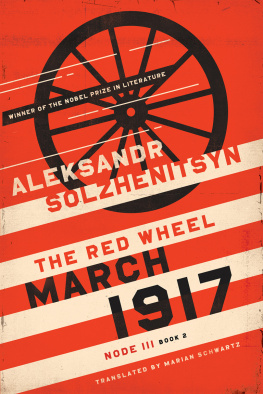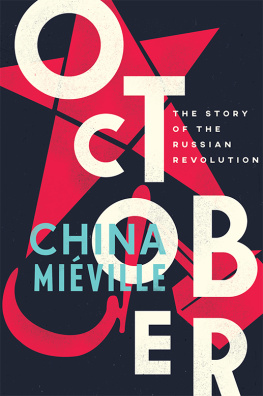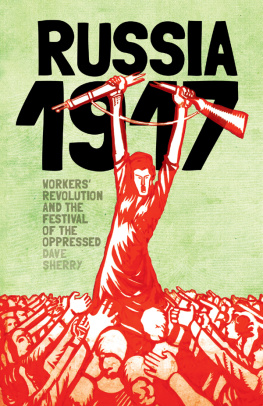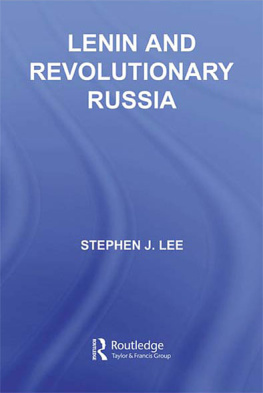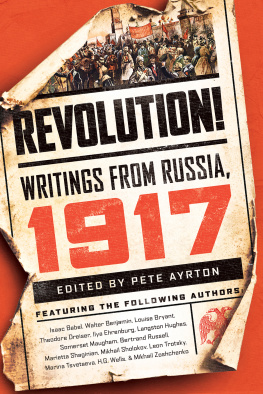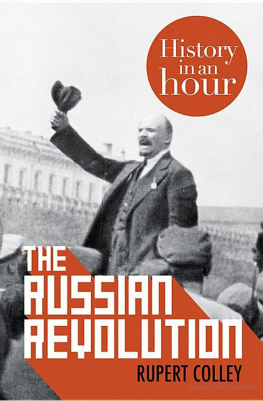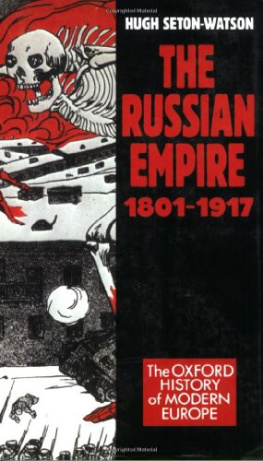First edition published in 1987 by
Methuen & Co. Ltd
Second edition first published in 1993
by Routledge
11 New Fetter Lane, London EC4P 4EE
Simultaneously published in the USA and Canada
by Routledge
29 West 35th Street, New York, NY 10001
This edition published in the Taylor & Francis e-Library, 2001.
1987, 1993 Alan Wood
All rights reserved. No part of this book may be reprinted or reproducedor utilized in any form or by any electronic, mechanical, or other means,now known or hereafter invented, including photocopying andrecording, or in any information storage or retrieval system, withoutpermission in writing from the publishers.
British Library Cataloguing in Publication Data
A catalogue record for this book is available from the British Library
Library of Congress Cataloguing in Publication Data
Wood, Alan
The Origins of the Russian Revolution 18611971/Alan Wood
p. cm. (Lancaster pamphlets)
Includes bibliographical references
1. RussiaHistoryNicholas II, 18941917.
2. Soviet UnionHistoryRevolution, 19171921Causes.
I. Title II. Series.
DK262.W67 1993
947.083dc20 9313451
ISBN 0-415-10232-4 (Print Edition)
ISBN 0-203-13120-7 Master e-book ISBN
ISBN 0-203-18301-0 (Glassbook Format)
eISBN: 978-1-13439-798-3
Foreword
Lancaster Pamphlets offer concise and up-to-date accounts of major historical topics, primarily for the help of students preparing for Advanced Level examinations, though they should also be of value to those pursuing introductory courses in universities and other institutions of higher education. Without being all-embracing, their aims are to bring some of the central themes or problems confronting students and teachers into sharper focus than the textbook writer can hope to do; to provide the reader with some of the results of recent research which the textbook may not embody; and to stimulate thought about the whole interpretation of the topic under discussion.
Preface to the second edition
Since the first edition of this pamphlet was published in 1987, dramatic, and at that time unpredictable, changes have taken place in the former Soviet Union, a nation which was created by the revolutionary upheavals of 1917 and the Bolshevik victory in the ensuing Civil War (191822). In 1985, Mikhail Gorbachev became General Secretary of the Soviet Communist Party and inaugurated a programme of far-ranging economic and institutional restructuring (perestroika), and a policy of openness and freedom of information (glasnost) unprecedented in Soviet experience. By 1991 his reforms had generated so much social discontent, political dissatisfaction, economic chaos and ethnic unrest in the non-Russian Republics, that in August of that year a cabal of hard line politicians attempted to launch a putsch against him, placed him under house arrest, and declared a state of national emergency. The putsch was defeated, but in the whirlwind of political transformation that followed, the Communist Party of the Soviet Union was obliterated, Gorbachev was forced to resign, and the USSR was formally abolished. The Soviet period of Russian history was over.
This situation of revolutionary change and uncertainty, which is still going on inside present-day Russia, has had a profound impact on the way in which the history of the 1917 Revolutions is now understood, studied and taught in the country where it took place. Some of the new theories, circumstances and perspectives in the rewriting of the Russian Revolutions are discussed in a completely revised final chapter. Otherwise, the text remains substantially the same as in the first edition, and the interpretation of the forces which formed the origins of the Russian Revolution stays basically unaltered. The central thesis is still that the events of 1917 itself, to which a separate chapter is devoted, can only be properly understood against the complex background of social, political, economic and intellectual developments within the Russian Empire in the period which began with the emancipation of the serfs in 1861. The last decades of the nineteenth century were a period during which the peoples of the Russian Empire went through the painful and ambiguous process of what Marxist historians would describe as a transition from feudalism characterized by autocracy and serfdom, to capitalism marked in what was still a basically peasant country by an imperfect modern economic infrastructure, new urban-based social forces, and the tsarist governments reluctant experiments with quasi-parliamentary political and legislative institutions. It is in the volcanic soil of this transitionary era that the seeds of the Revolution were set.










